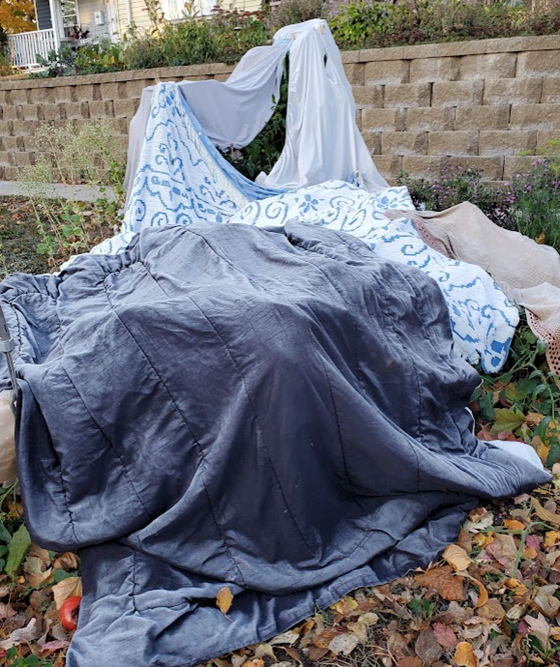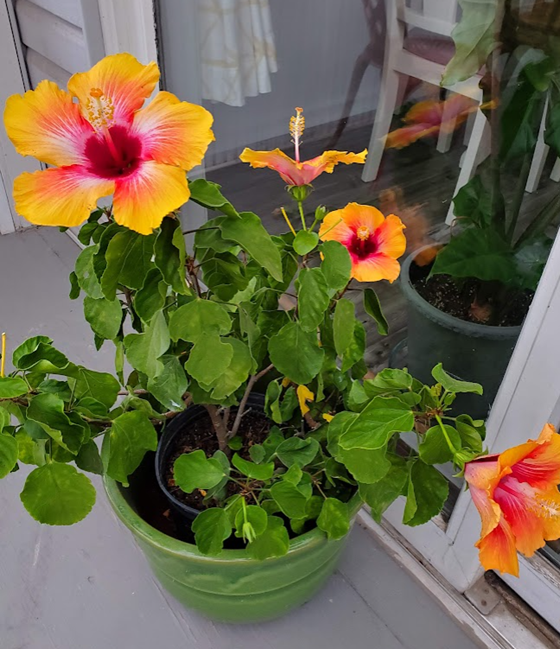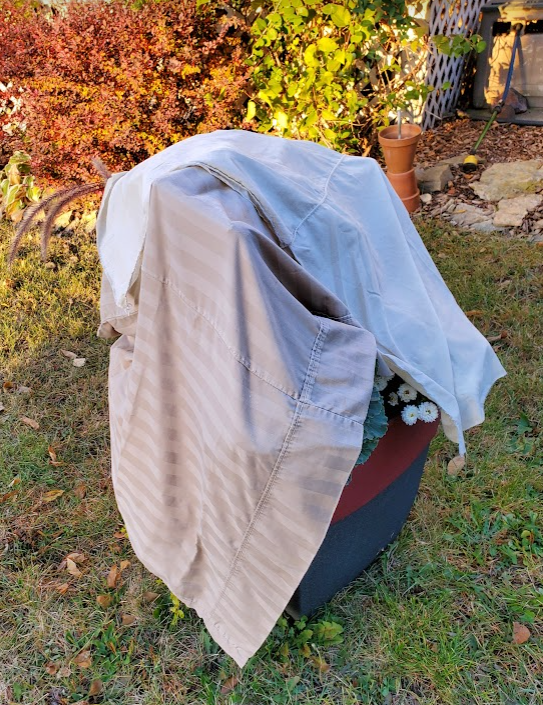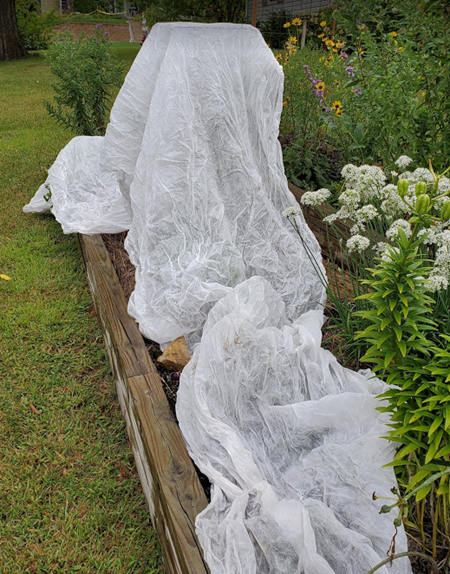Click below to listen to my 2 min. Garden Bite radio show/podcast: What those “frosty” terms mean to our plants
It’s not Winter yet, but it’s on the way and some have already experienced some temperatures dipping into the 20’s. I was on a recent motorcycle trip and 50 is a bit cool! Other friends were going this week where highs are in the low 40’s! Tomatoes and peppers have already been covered or lost.

We’ve traded out the summer annuals for mums and kale, brought the tropicals inside or bid them adieu into the compost pile and are working on getting those spring bulbs in the ground before our fingers freeze.

So what do those frosty terms mean? When should we really get concerned about our plants?
In gardening terms, a “light freeze” or “light frost” refers to temperatures that fall just a few degrees below freezing (32 degrees F) for a few hours. Some hardy plants may not be damaged. A “hard frost” or “killing frost” comes when the temperature drops further, below 28 degrees, for at least 4 hours. It will kill the top growth of most perennials and root crops. 24 degrees will be the end… for most of our perennials. NOW, that doesn’t mean you shear them off. But that’s another Garden Bite!

Click on the USDA zone maps to the right on HERE to find out what zone you live in. As for first frost dates, typically for zone 3 it’s September 15th, for zone 4 it’s around October 7th and zone 5 it’s October 15th. These are just estimates!

Some hardy annual plants can handle a light frost (mums are a perfect example), but a hard freeze will generally kill ‘em off. For those of us in zones 3 and 4, some have already entered frost territory.

As for when the ground itself freezes, that’s usually early December but with changing weather patterns, check with your local county extension or soil and water district.

For most, lawn mowing is over but you can sure mow over those fallen leaves and leave them on the ground. So long as they’re chopped up well, they will break down and go into the soil providing a bit of nitrogen. Plus it keeps you from raking! You can also bag the mowed leaves and put them in your compost pile or layer them on your garden beds!

And just for “fun” – here are some Winter Weather terms from Mental Floss Hard Rime and Thunder Snow included as well as the technical terms for sun dogs and moon dogs!
